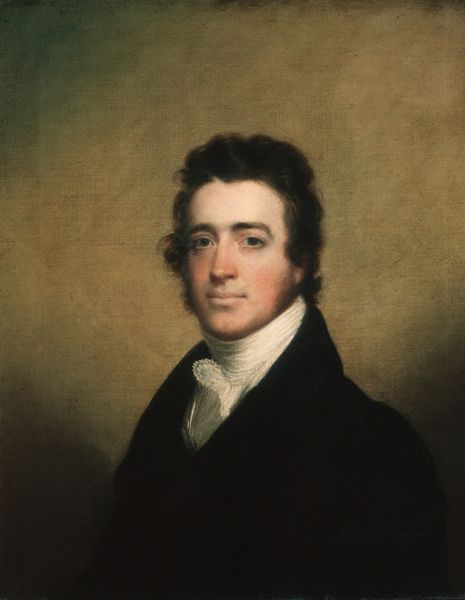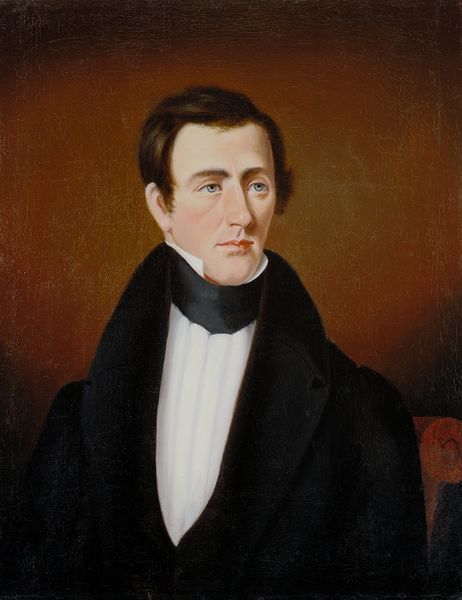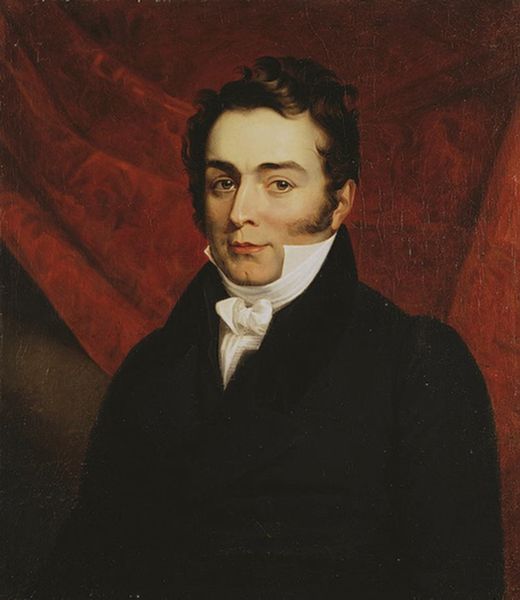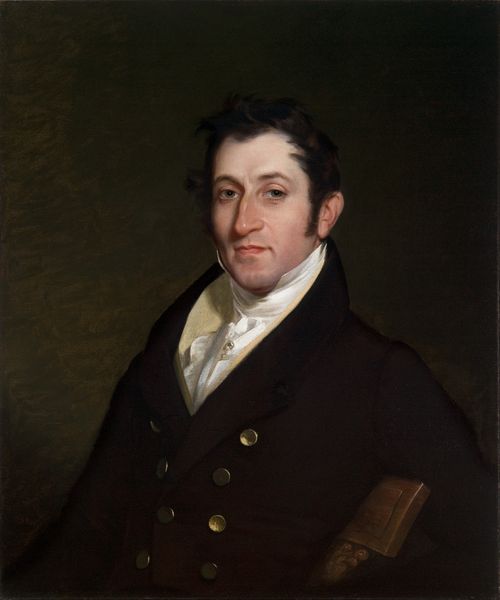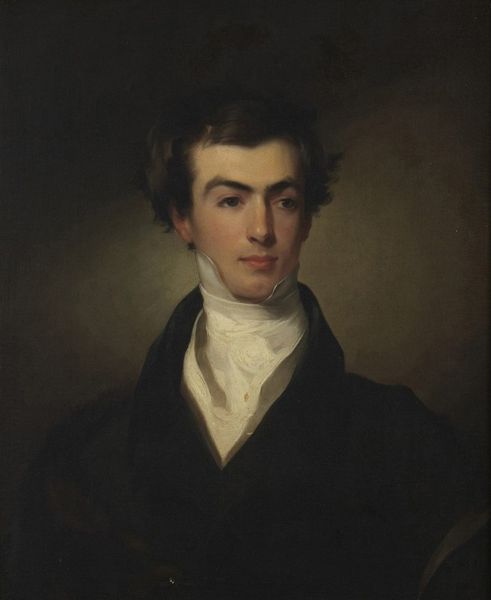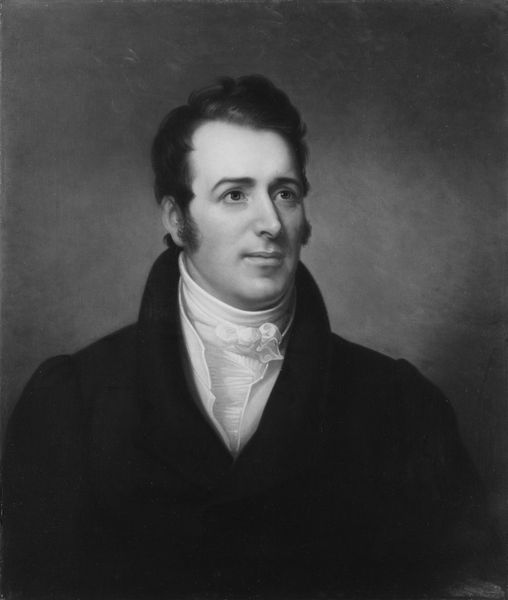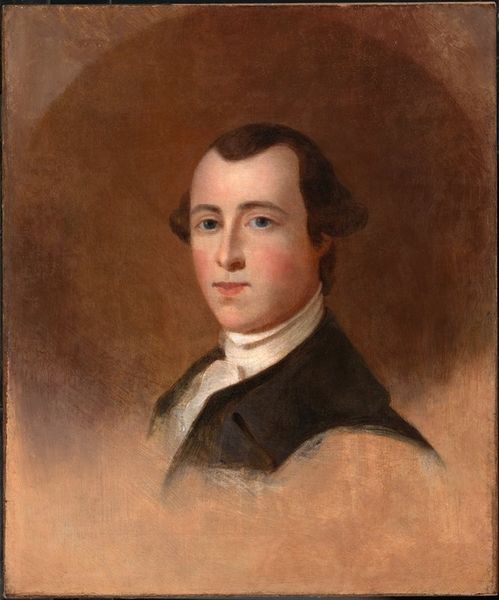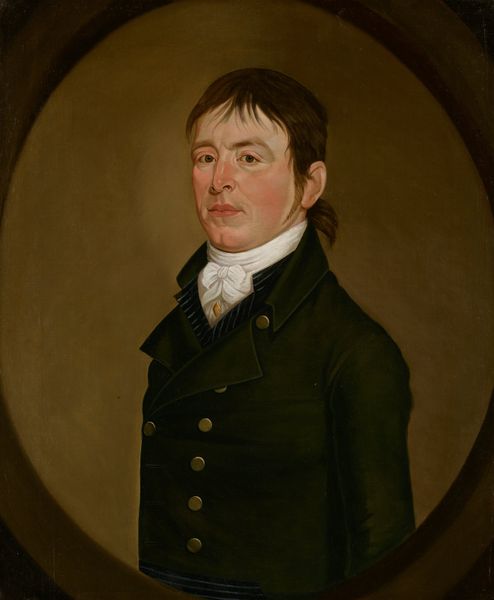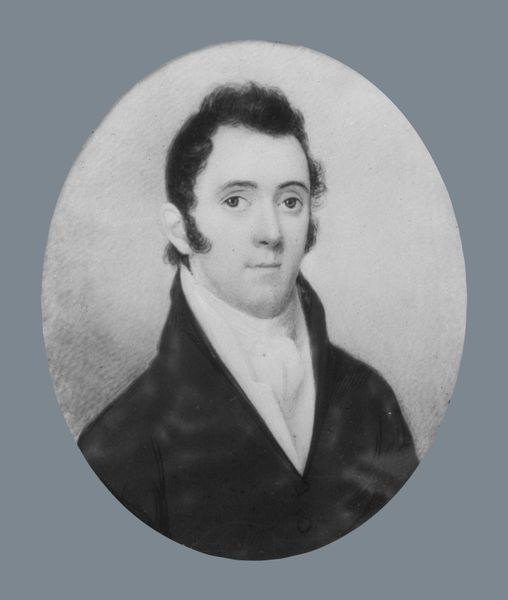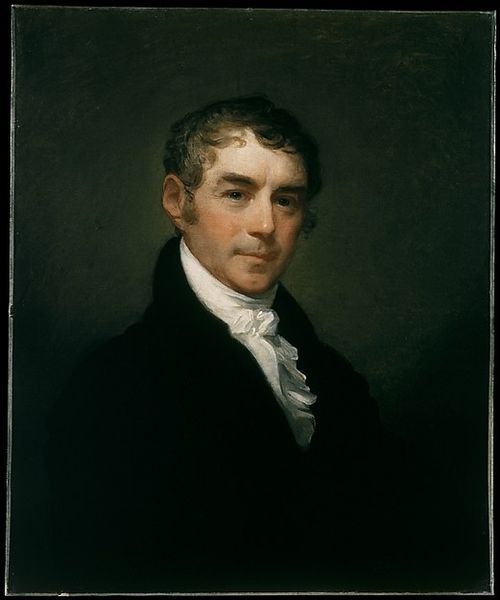
oil-paint
#
portrait
#
portrait image
#
portrait
#
oil-paint
#
portrait reference
#
portrait head and shoulder
#
romanticism
#
men
#
portrait drawing
#
history-painting
#
facial portrait
#
academic-art
#
portrait art
#
fine art portrait
#
celebrity portrait
#
digital portrait
Dimensions: 30 1/8 x 25 in. (76.5 x 63.5 cm)
Copyright: Public Domain
Curator: I'm drawn to the subdued palette. The darkness feels…weighted, like a held breath. Editor: Exactly. That weight carries significance. We are looking at William Dunlap's 1829 oil painting, “John Adams Conant,” now hanging in the Metropolitan Museum. Curator: Conant’s clothes— the high collar, dark jacket—speak to the time, but also the labor involved in their making, the social hierarchies reflected in fabric choices and tailoring techniques of that era. It’s about understanding class distinctions in production, isn't it? Editor: It is, and the power dynamics that underpinned early American society. These portraits were commodities, shaping how individuals like Conant, potentially a politician or a businessman, wanted to be perceived, particularly within emerging societal roles and the early capitalistic structure. The brushstrokes even contribute to a calculated display of civic virtue. Curator: Calculated? Maybe, but consider the process of painting: grinding pigments, layering thin glazes… Dunlap would've handled and combined all the ingredients himself. He literally embodied that act of material transformation. And those ingredients – where did they come from? Whose labor was involved in the extraction and refinement? Editor: Yes, but it's also the presentation. The lighting directs your eye. What do we glean from his subtle gaze, a suggestion of intellect, or even… reservation? He’s participating in a constructed narrative of respectable masculinity within his era's value system. Who had the privilege of this kind of representation? Who was excluded? Curator: Excluded yes, absolutely, this sort of commission was available for so few at the time and understanding its existence helps us think about today and how artwork and the value of art plays in culture wars. Editor: The fact that Dunlap captured Conant, even with all the complexities and societal implications inherent in such an act, provides a fascinating historical document for examining not just Conant himself, but broader societal dynamics of early 19th-century America. Curator: Indeed. When we scrutinize the labor, the means of creating this material object, we simultaneously gain insight into production of culture, but more importantly, the distribution of capital both at that time and now.
Comments
No comments
Be the first to comment and join the conversation on the ultimate creative platform.

